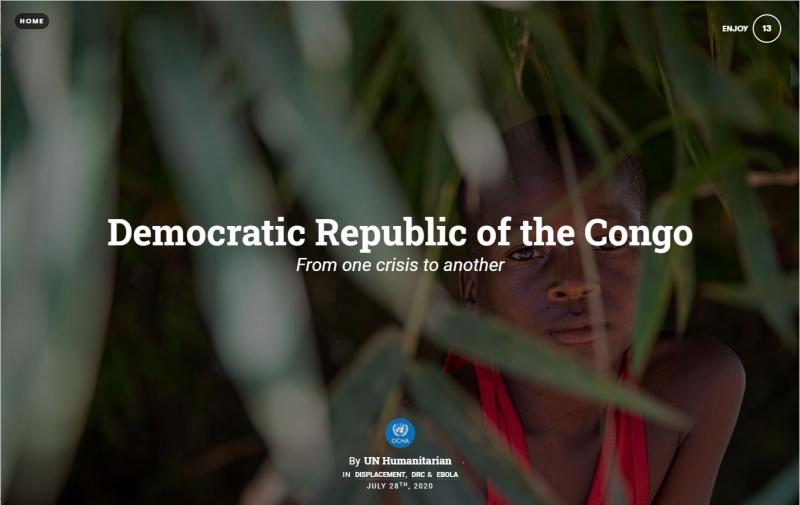

Torren tial rains in the eastern part of the country between January and May resulted in flooding that caused severe property damage across several provinces. In Tanganyika, Haut-Lomami, Haut-Katanga and Lualaba, nearly 400,000 people were affected by the rising waters, and about 60,000 were forcibly displaced from their homes. Some 350 schools were destroyed, nearly 12,000 hectares of agricultural land were flooded, and close to 40 health structures were destroyed. In South Kivu, an additional 265,000 people were affected, including in Uvira, Fizi, Nundu, Lemera and the Ruzizi Plain. The Ruzizi Plain suffered heavy farming losses, as almost 75 per cent of its 15,000 hectares of crops were lost. In Maniema Province, the floods destroyed nearly 30,000 houses and abruptly ended the schooling of more than 7,000 students. Although flooding is commonplace, lack of urban planning is often cited as an aggravating factor. Very few provinces have a disaster management plan.
On 25 June, the Congolese Government announced the end of the Ebola epidemic in eastern DRC, the country’s longest and deadliest outbreak, in which more than 2,200 people died. The outbreak was declared a public health emergency of international concern, resulting in significant national and international human and financial resources to deal with it. The epidemic was the first to take place during a conflict. Security was a main challenge, and more than a dozen health professionals died due to armed violence.
Just as this painful chapter was closing, another one was beginning. On 1 June, a new Ebola epidemic appeared in Equateur Province, striking regions that had been affected two years ago.
Since January 2019, more than 370,000 people have been affected by a measles epidemic. There have been 6,600 deaths, making it the worst measles epidemic in the world currently. During the first six months of 2020, nearly 60,000 cases, including 781 deaths, were recorded. The response is being hampered by, among other factors, access constraints, population movements and community resistance.
More than 18 million people have been vaccinated since January 2019. Recent statistics are showing a downward trend, despite pockets of concern in the Kasai region in the centre of the country.
With the combined effects of displacement, disease and widespread poverty, millions of Congolese suffer from food insecurity. At the beginning of the year, humanitarian organizations estimated the number of food-insecure people at 15.6 million. With the emergence of the coronavirus, this number has risen to 19.4 million, thereby increasing the amount of aid required to reach them.
Between January and May 2020, tens of thousands of hectares of land were flooded in the eastern part of the country, foreshadowing a catastrophic agricultural season in this area. Food aid accounts for the largest portion of the Humanitarian Response Plan.
Six months after the launch of the Humanitarian Response Plan 2020, less than 20 per cent of the requested $2.07 billion in funding has been received. In the face of the current state of funding, the Humanitarian Coordinator has made use of the in-country Humanitarian Fund to support operations, including three recent allocations of $55 million for operations in 14 provinces. In 2018 and 2019, funding was below 50 per cent.